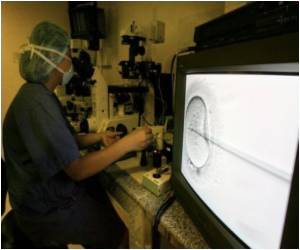HGPS is a rare genetic disease and one in every 4-8 million births is affected by this disease.

The new study, published in the leading cardiovascular research journal Circulation, identifies a possible treatment to block the deposition of calcium in arterial wall. This calcification greatly increases the risk of cardiovascular disease, and most progeria patients die of a heart attack or stroke at an average age of just 13 years.
The researchers, led by Dr. Vicente Andrés, director of the Molecular and Genetic Cardiovascular Pathophysiology group at the CNIC, describe the mechanisms that cause vascular calcification in a mouse model of HGPS that recapitulates the main symptoms of the human disease. The study was conducted in close collaboration with the team at the Universidad de Oviedo led by world-leading progeria expert Dr. Carlos López-Otín. The authors show that the aortas and blood of 'progeric' mice accumulate smaller quantities than healthy mice of extracellular pyrophosphate, a potent inhibitor of vascular calcification.
This is due to two main reasons. First, due to a defect in their mitochondria, these mice produce lower amounts of the source of pyrophosphate, ATP. Second, the progeric mice have a higher than normal activity of alkaline phosphatase, the enzyme responsible for degrading pyrophosphate.
Dr. Andrés' team has demonstrated that chronic treatment with pyrophosphate inhibits the deposition of calcium in the arteries of mice with the disease. The next step toward translating this finding to humans will be to confirm that the same mechanism also exists in children with HGPS, that is, to demonstrate that the blood and arteries of these children also have low levels of pyrophosphate. According to Dr. Andrés, if this is the case "it would be possible to test whether bisphosphonates, chemical analogues of pyrophosphate, achieve the same therapeutic effect in these children".
The study received the prize for the best basic research poster at the 7th International Scientific Workshop on progeria, held earlier this year in Washington D.C. by the Progeria Research Foundation. Dr. Ricardo Villa-Bellosta, first author on the article, explained that "these findings mark a step on the way toward preventing vascular calcification in children with HGPS". The changes detected by the CNIC researchers might also contribute to bone calcification and joint rigidity, two other symptoms seen in HGPS patients, who are characterized by their distinctive physical appearance associated with premature aging. Recent studies have shown that small quantities of progerin accumulate during normal aging.
Advertisement
The article in Circulation is featured in an editorial written by Harvard professor Jane A. Leopold, who comments that it may be possible to extrapolate the results of this study to the process of vascular calcification in the population at large. Dr. Leopold also points out that, while aging is inevitable, this study and others demonstrate that vascular calcification can be prevented.
Advertisement













